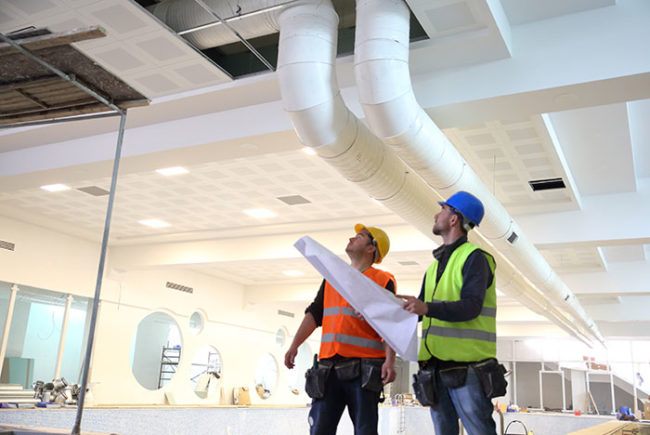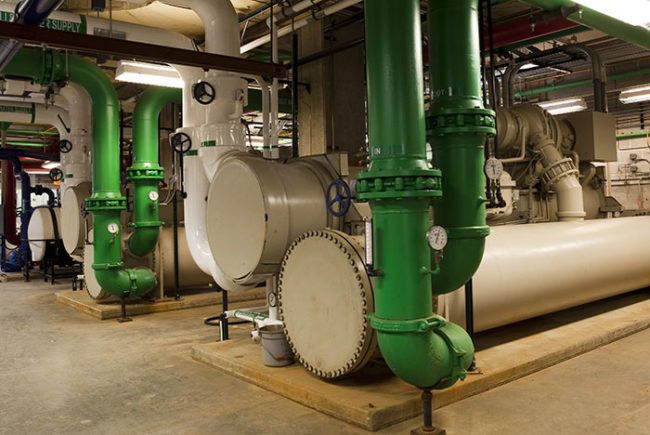New edition of ASHRAE health care ventilation standard available
The 2017 edition of ANSI/ASHRAE/ASHE Standard 170: Ventilation of Health Care Facilities is now available. The standard offers guidance on ventilation system design requirements to provide environmental control for comfort, asepsis and odor in health care facilities.
The 2017 edition incorporates the 12 published addenda to the 2013 edition, including:
- Addition of adiabatic humidifiers as an acceptable type
- Addition of a new type of exam room with lower requirements for less-acute applications
- Clarification around the prohibition of controls to change pressure relationships between spaces
- Reduction in requirements for electroconvulsive therapy-procedure rooms
- Reduction in requirements for laboratories when allowed by certain calculations
- Higher requirements for higher hazard-exhaust airstreams
- Coordination of space temperature requirements in the sterile processing department with other industry groups
- Clarification of the definition of the primary diffuser array in operating rooms
IAHSS shares best practices for screening at-risk patients to protect health care workers
The International Association for Healthcare Security and Safety Foundation’s latest research focuses on strategies for protecting health care workers by screening patients at risk of acting out in violence.
The report, “Reducing Violence Toward Healthcare Workers: The Value of At-Risk Patient Screening,” details how to detect the early warning signs and indicators of a potentially violent patient, and gives tools and measures used to predict violence. It also explains preparation, training and other efforts that can be used to mitigate violence; regulatory and legal issues to consider; and the value of reducing incidents in health care workplaces.
HFAP quality report identifies top physical environment accreditation deficiencies
The Healthcare Facilities Accreditation Program’s annual Quality Report lists the most commonly cited standards found during its 2016 surveys.
The report highlights the frequency of deficiencies associated with the health care physical environment, including life safety and emergency management. For instance, the top five physical environment deficiencies touched on eyewash stations; building safety issues; fire drills; medical equipment management; and ventilation, light and temperature controls.
The report also provides common examples from surveyors’ experiences and gives tips for how to improve and achieve compliance.
NIOSH publishes PPE conformity assessment framework
The National Framework for Personal Protective Equipment Conformity Assessment–Infrastructure is a multiyear effort from the National Institute for Occupational Safety and Health to develop and manage a consistent structure for personal protective equipment use across the U.S.
The group’s four objectives were to:
- Identify and analyze national and international conformity-assessment programs and requirements;
- Investigate injury and enforcement surveillance databases;
- Research and gather PPE standards;
- Develop a risk-based approach to conformity assessment resulting in this framework.
“The goal of our efforts at NIOSH is to provide national and world leadership to prevent workplace illnesses and injuries,” the organization states. “We accomplish this by conducting and supporting activities to protect workers from work-related exposures to hazards. One core objective of this approach involves the development and use of personal protective equipment.”
FCC to consider changes to Rural Health Care Program
The Federal Communications Commission (FCC) released a draft notice of proposed rulemaking and order that would update its Rural Health Care (RHC) Program to meet the growing demand for broadband telehealth services.
Among other changes, the draft order would waive the RHC Program's $400 million cap on a one-time basis and allow unused funds from previous years to support current applicants. The cap was exceeded in fiscal years 2016 and 2017. In addition, the notice seeks comment on increasing the RHC Program's $400 million annual cap permanently and creating a prioritization mechanism in the event of demand exceeding the cap.
FCC will consider the proposed rulemaking and order at its Dec. 14 public meeting.
SHEA/CDC publish guide for hospital response to infectious disease outbreaks
A new expert guidance document for hospitals to use in preparing for and containing outbreaks was published by the Society for Healthcare Epidemiology of America, with the support of the Centers for Disease Control and Prevention.
The guide, “Outbreak Response and Incident Management: SHEA Guidance and Resources for Healthcare Epidemiologists in United States Acute-Care Hospitals,” leads epidemiologists through how to apply, use and interact with emergency-response structures, groups and frameworks from the institutional to the federal levels.
"We will always be faced with new and re-emerging pathogens," says Lynn Johnston, M.D., co-chair of the writing panel and professor of medicine and infectious diseases at Dalhousie University, Halifax, Nova Scotia. "This guidance is part of an ongoing effort to develop tools and strategies to prevent and manage contagious diseases to ensure patient and public safety."
Joint Commission revises life safety standards for residential behavioral health care
The Joint Commission has revised additional standards of the Life Safety chapter applicable to residential behavioral health care facilities as part of the Behavioral Health Care accreditation program.
The Joint Commission states that “further revisions were necessary in the update of the LS standards to the 2012 edition of the National Fire Protection Association’s NFPA 101 Life Safety Code.”





